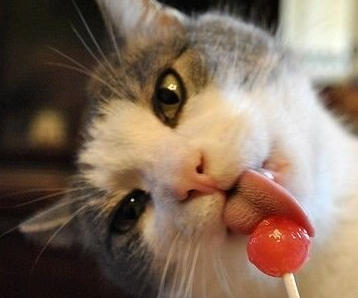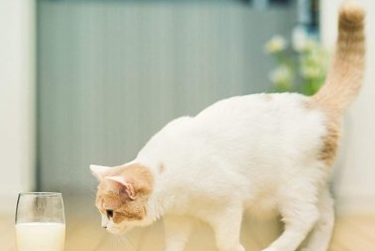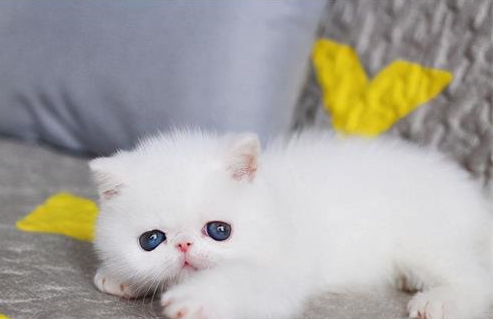Why is bromopermethrin dangerous for cats?
The unique physiological characteristics of cats mean that they cannot break down bromethrin. Even small doses can be toxic to cats. The cat’s liver lacks a key liver enzyme called hepatic glucuronidate transferase. Thus it cannot be broken down, so a little bit of permethrin will exist for a long time. To make matters worse, bromethrin is fat-soluble and can be absorbed through the skin. Permethrin is not the same toxicity to dogs and cats, which is why you’ll find dog collars containing permethrin in pet stores. These things are easy to buy, but shovelers are often unaware of the toxicity risks to cats.
How do cats get thymethrin poisoning?
Sadly, the first way cats are poisoned is often the shoveler unaware of the dangers and gives cats a flea-neutral bromopermethrin specially prepared for dogs. And poisoning can also occur when cats are next to dogs that have just been removed from fleas with bromopermethrin. This contaminates their own fur, and permethrin is absorbed through the skin or when the cat combs its own coat. Cats lying on a dog’s bed or sitting on the same furniture can also be poisoned. So do not use any flea removal products containing bromethrin for cats.

Symptoms of permethrin poisoning in cats
What are the symptoms of feline bromethrin poisoning? What should I be aware of? The speed and severity of the symptoms of poisoning often depend on the dose given and the concentration of the toxic ingredients. When exposed to a small amount of environment, it can take up to three days for symptoms to develop. The first obvious symptom is likely to be that the cat looks restless, anxious, shaky, as if drunk. Other symptoms include muscle twitches and tremors, as well as worrying seizures.
twitch
Muscle tremors
Lots of drooling
Faltering and poor coordination
The pupils dilate for no reason
Cat seizures
Grumpy
Immediate action to be taken after feline bromethrin poisoning:
If you think your cat has been exposed to bromethrin, whether direct or indirect, take it to a pet hospital immediately. Even if there is no antidote, acting quickly can save your cat’s life. The first step, which you can do at home, is to demut the cat’s fur as soon as possible to minimize the damage. Wash the cat with diluted dish soap in warm water. Doing so helps reduce the amount of bromethrin absorbed through the skin, which can be the difference between life and death. After bathing, dry the cat and keep it warm, then go to the nearest pet hospital.

Treatment of permethrin poisoning in cats
Veterinary treatment will depend on the extent of the cat’s poisoning, including but not limited to:
1. Intravenous infusion: This has several benefits. For example, most cats are too poor to eat or drink, so fluids prevent dehydration, which in turn protects the kidneys from working non-stop. Permethrin is fat-soluble, so it takes a while to flush out of the body, but intravenous fluids help promote this.
2. Anti-epileptic drugs: muscle tremors and convulsions make people exhausted and dangerous. A range of different medications may be necessary to promote muscle relaxation and limit the effects of seizures. For the most affected cat patients, general anesthesia and a breathing tube may be required to control the condition.
3, medical care: muscle contraction will produce heat, and high fever is dangerous. Care includes monitoring the cat’s body temperature and keeping the cat cool. In addition, cats that are too weak to stand need to turn over regularly to prevent pressure sores.
4. Lipid infusion: The latest innovation in the treatment of permethrin toxicity is the use of lipid infusion. These drugs extract diclopermethrin from body fat and enter the bloodstream for the kidneys to excrete urine. But this treatment is often in the infancy of the cat and is not widely available.
If treated promptly, most cats will make a full recovery. For cats with more severe poisoning, especially those with more difficult seizures to control, statistics show that 10-40% of cats poisoned with bromotrimethrin will not survive even after veterinary treatment.

How to prevent feline bromethrin poisoning?
In this case, prevention is certainly better than treatment. So, how can you guarantee that your cat won’t be poisoned? Quite simply, don’t use bromethrin products in your pet or at home. Avoid all pyrethroids (pyrethroids, permethrins, or pyrethroids) products to minimize the risk of toxicity.
Do not apply dog fleas products to cats
If you have a cat or dog at home, you can choose flea therapy without bromopermethrin to reduce the risk. It’s also a good idea to separate the dog from the cat until any localized flea treatment is dry. Be sure to read the active ingredient and warning labels on the packaging. This includes when you shop online – make sure you know what the active ingredient is and choose a product that is bromopermethrin-free. If you’re picking up ready-made flea treatments in a store, buy a specific breed that suits the cat’s weight and age. Kittens may be more sensitive to fleas treatment than adult cats, so it’s important to use the correct dosage based on their age.









